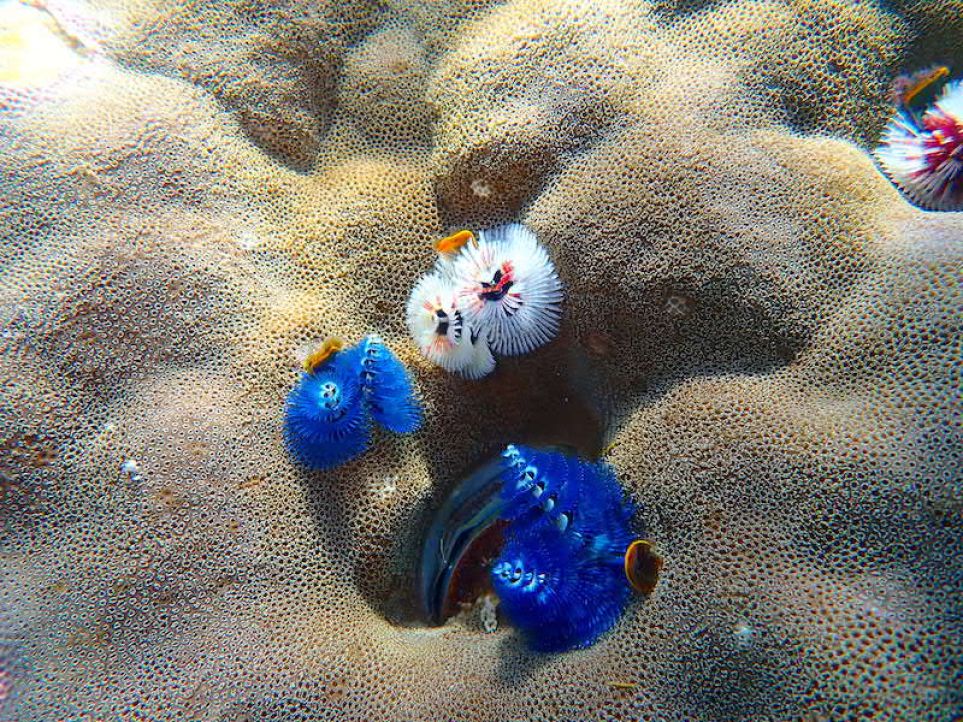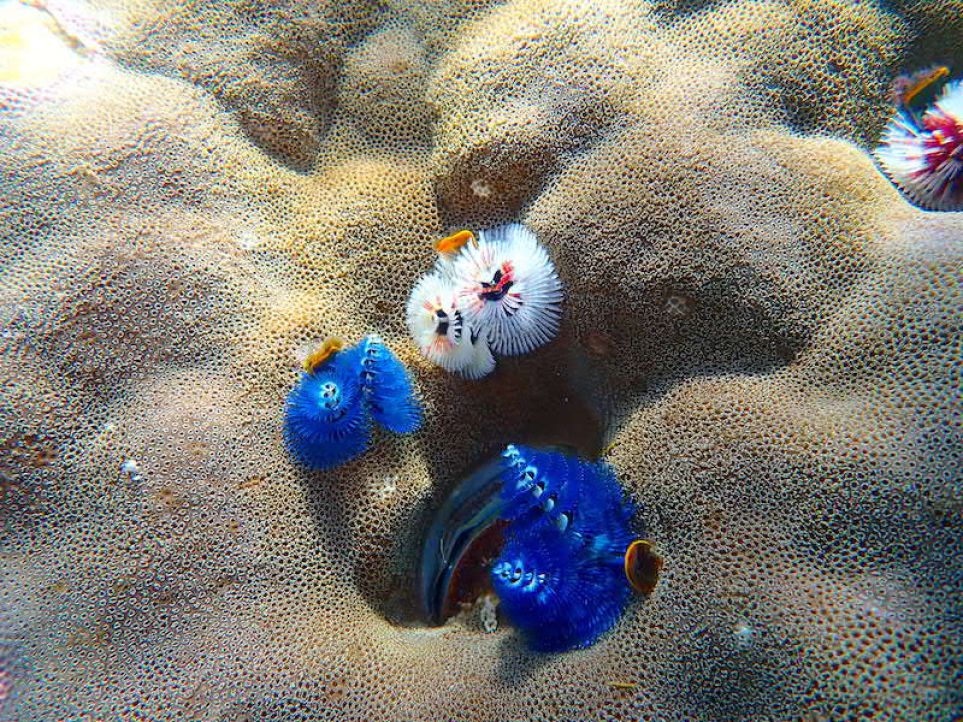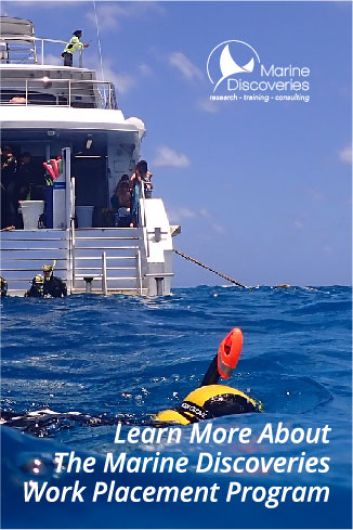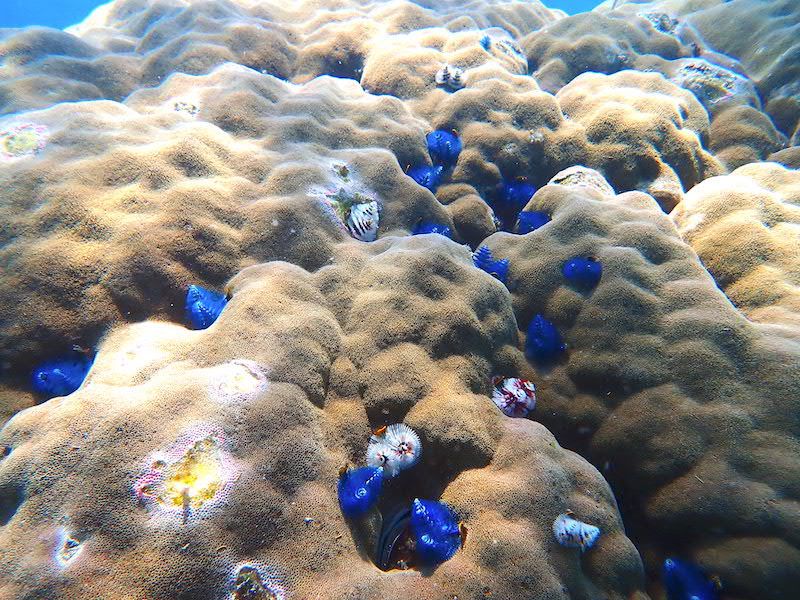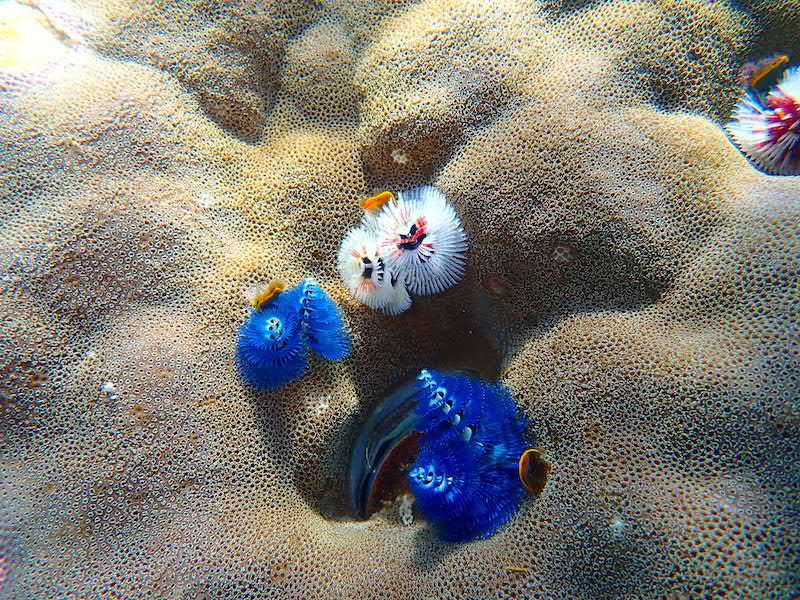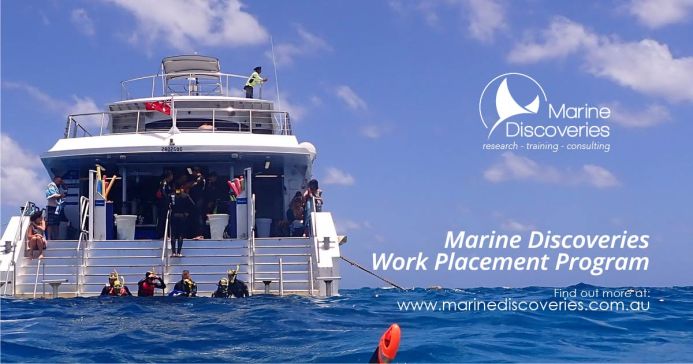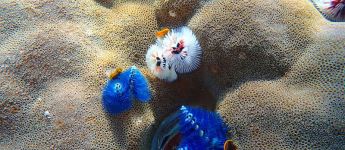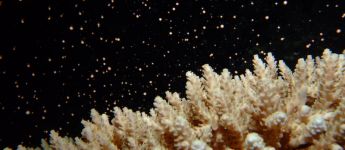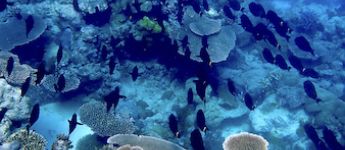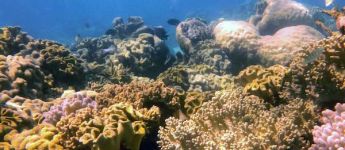Underwater Christmas Trees.
Holiday season may have been and gone but it is always the season in the Great Barrier Reef! Imagine snorkelling amongst stunning corals and fish when you notice a massive coral covered with vibrant coloured animals that look a lot like miniature Christmas trees. You ask yourself and your snorkelling buddies, “what are those?!”. Just to find out they are in fact… christmas tree worms
Firstly, let's talk about some interesting facts. christmas tree worms, under the right conditions can live upwards of 20-30 years within the same coral. Yup, that’s right, they spend their whole life on the same coral, no change of scenery for them! On average they grow up to around 3.8cm and get this, christmas tree worms breathe and consume food using the same body part – their radioles - basically feathery tentacles!
From the outside, christmas tree worms look quite small, This is because at least two-thirds of their body is hidden within their calcium carbonate tubes that are in the coral and these tubes can get to nearly 30cm long. The most common predators for these worms are not your household pets that knock over normal Christmas trees but in fact are sea urchins and other invertebrates. They tend to eat the feather like plumes the worms have exposed, leaving some remaining parts which have the ability to regrow within some weeks.
Christmas tree worms can disappear in milliseconds, so make sure not to blink. They can sense changes in light or movements in the water and retract when feeling threatened. Christmas tree worms can be compared to moody teenagers as they spend most of their time in their rooms and will only leave to get a snack.
In terms of appearance, they are very striking and have very bright vivid colouration tree shaped crowns just like you would see in your house every December with presents under it. Many people however, associate bright colours with the fact that a species is dangerous or maybe poisonous. Are these cute festive creatures really dangerous? Despite their crazy and unique appearance, the simple answer is no, they pose no threat to humans. In fact, if your were to gently waft the water around them, they would retract and hide from you.
The majority of invertebrates asexually reproduce but for Christmas tree worms, they have both male and female reproductive organs and go under the broadcast spawner category (check out our blog on coral spawning for more information on what this means!). This keeps their genetic pool alive and healthy, allowing them to keep adapting to any changes in the climate that may affect them.
About the Author

Abby Seymour

Marine Discoveries
Organisation

85 Lake Street Cairns,
Queensland. 4870
Australia
+61 (0)7 4031 7794
ABN: 93 643 207 845
Marine Discoveries acknowledges, recognises and respects the Elders, families and forebears of the the Bama Peoples – the Aboriginal rainforest people who are traditional custodians/owners of the lands that cover our region. We also acknowledge, recognise and respect other Aboriginal and Torres Strait Islander people who call our region and the Great Barrier Reef their home.
ABN : 93 643 207 845

